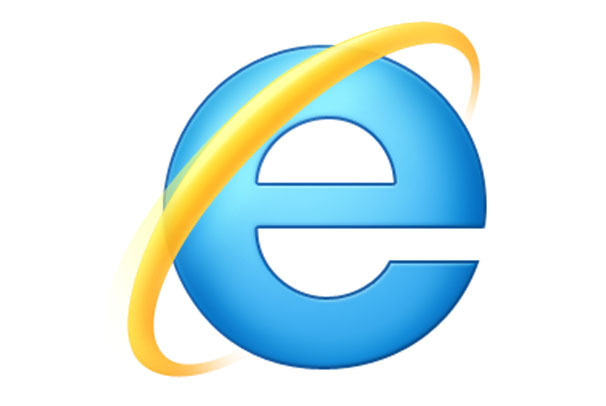Internet Explorer
Internet Explorer (formerly Microsoft Internet Explorer and Windows Internet Explorer,commonly abbreviated IE or MSIE) is a series of graphical web browsers developed by Microsoft and included as part of the Microsoft Windows line of operating systems, starting in 1995. It was first released as part of the add-on package Plus! for Windows 95 that year. Later versions were available as free downloads, or in service packs, and included in the Original Equipment Manufacturer (OEM) service releases of Windows 95 and later versions of Windows.
Internet Explorer is one of the most widely used web browsers, attaining a peak of about 95% usage share during 2002 and 2003.[6] Its usage share has since declined with the launch of Firefox (2004) and Google Chrome (2008), and with the growing popularity of operating systems such as OS X, Linux, iOS and Android that do not run Internet Explorer. Estimates for Internet Explorer's overall market share range from 16.9% to 57.38% (or even as low as 13.09% when counting all platforms), as of February 2015 (browser market share is notoriously difficult to calculate). Microsoft spent over US$100 million per year on Internet Explorer in the late 1990s, with over 1000 people working on it by 1999.
The browser has received scrutiny throughout its development for use of third-party technology (such as the source code of Spyglass Mosaic, used without royalty in early versions) and security and privacy vulnerabilities, and both the United States and the European Union have alleged that integration of Internet Explorer with Windows has been to the detriment of other browsers.
The last release is Internet Explorer 11, with an interface allowing for use as both a desktop application, and as a Windows 8 application.
Versions of Internet Explorer for other operating systems have also been produced, including an Xbox 360 version called Internet Explorer for Xbox and an embedded OEM version called Pocket Internet Explorer, later rebranded Internet Explorer Mobile made for Windows Phone, Windows CE, and previously, based on Internet Explorer 7 for Windows Mobile. It remains in development alongside the desktop versions. Internet Explorer for Mac and Internet Explorer for UNIX (Solaris and HP-UX) have been discontinued.
Starting January 12, 2016, only the most recent version of Internet Explorer on each operating system will be supported, depending on operating system it will be IE 11 or could be down to IE 9 for older desktop/server Windows versions or down to IE 7 for older embedded Windows versions.
On March 17, 2015, Microsoft announced that Spartan will replace Internet Explorer as the default browser on its Windows 10 devices. Internet Explorer will, however, remain on some versions of Windows 10 primarily for enterprise purposes.
(Wikipedia)
Works Developed in this Platform:
| Work title | Author | Language | Year |
|---|---|---|---|
| 10 Poemes en 4 Dimensions | Xavier Malbreil | French | |
| Great Wall of China | Simon Biggs | English | 1996 |
| Smorball | Mary Flanagan | English | 2016 |
| Stupid Robot | Mary Flanagan | English | 2016 |
| Превратности кочевой жизни | 1998 |
The Internet Explorer project was started in the summer of 1994 by Thomas Reardon,[citation needed] who, according the Massachusetts Institute of Technology Review of 2003, used source code from Spyglass, Inc. Mosaic, which was an early commercial web browser with formal ties to the pioneering National Center for Supercomputing Applications (NCSA) Mosaic browser. In late 1994, Microsoft licensed Spyglass Mosaic for a quarterly fee plus a percentage of Microsoft's non-Windows revenues for the software. Although bearing a name similar to NCSA Mosaic, Spyglass Mosaic had used the NCSA Mosaic source code sparingly. Microsoft was sued by Synet Inc. in 1996 over the trademark infringement.
Early versions
Internet Explorer 1Main articles: Internet Explorer versions § Early versions, Internet Explorer 1, Internet Explorer 2, Internet Explorer 3, Internet Explorer 4, Internet Explorer 5, Internet Explorer 6 and Internet Explorer 7


